I am waiting outside the Divisional Forest Officer’s (DFO) chambers at Uttarakhand’s Tehri Garhwal division—hoping to meet him while cajoling with his staff about my work on forestry and the law—when his Secretary walks in and says, “he would not be able to meet you for a week, Conservator sahib has come. It’s forest fire season, no time for chit-chat.”
I realised my fate would be the same at every DFO’s chamber this month. As paperwork around forest fires kept flowing across these offices, there was an implicit recognition that the fires would consume most of the department’s office hours. Over the past six months—from October 2020 till April 2021—forest fires have broken out at an unprecedented 964 locations across Uttarakhand, with 45 active fire spots and 8 casualties till date. The state has lost almost 670 hectares of recorded forest area due to these fires—at present, some fires are ravaging around 62 hectares of forested areas per day.
Forest fire close to #Gular village in #TehriGarhwal. This was shot by @sefconnect team who live in the village. Request authorities to take swift measures to control this fire before it spreads rapidly. @cmouttarakhand @UttarakhandCEO @TehriDistrict #UttarakhandForestFire pic.twitter.com/gHBHlr4qHl
— Pracheta (@Pracheta) April 5, 2021
On the 5th of April of this year, the Uttarakhand High Court took cognizance of the fires. At a subsequent hearing on the 12th of April in the presence of the Principal Chief Conservator of Forests, it called upon the Forest Department to fill existing vacancies, implement the Crisis Management Plan for the fires, and explore the possibility of cloud seeding to generate artificial rainfall for dousing them.
Such top-down measures are being issued despite Uttarakhand being home to the country’s oldest grassroots forest management system since the 1930s—the Van Panchayats are local autonomous institutions in areas designated as forest land, running in parallel to local self governance institutions. Today, only around 30% of the Panchayats are still functional; these ground-level institutions have been taken over by the Forest Department subsequent to the Joint Forest Management launched in the 1990s. Thus, village forests and common lands soon came under supervision and control of the Forest Department.
The subsequent sanctions imposed by the Department on locals for entering Reserved Forests since then has made them apprehensive towards consensually participating in community-driven forest restoration or management activities too—which include fire prevention.
Till date, none of the exclusionary forest fire prevention measures issued by the state government have recognized their impacts on forest dwellers, or the politics embedded within the response strategies pursued by the Forest Department and various Courts. This is especially seen in the case of the Van Gujjars—a forest dwelling community present in Uttarakhand—whose livelihoods are threatened not only by forest fires, but by their State-sanctioned neocolonial exclusion from ‘protected’ forest lands as well.
The Colonial Legacy of Excluding Locals from Forest (Fire) Management
Currently, to track the spread of the fires, the Forest Survey of India (FSI) constantly updates its Forest Fire Alerts System, which uses satellite imagery provided by NASA and ISRO to enable alerts at the Beat and District levels. To identify fire-prone areas and take preventive measures, the FSI has also developed Early Warnings and Rating Systems—such as the Fire Weather Index. These rely upon weather data, reducing forest fuel load conditions (such as removing debris on the forest floor and clearing small trees and shrubs in the understory), socio-economic and infrastructural data, and terrain conditions. The Ministry of Environment, Forests and Climate Change (MoEFCC) has also come up with the National Action Plan on Forest Fires, 2018, to reduce the vulnerability of forests from fire hazards, by enhancing the response and recovery capabilities of state, divisional, and range level institutions coupled with local self government bodies.
However, the MoEFCC has been quick to adopt technocratic approaches followed in developed nations like the United States of America—such as the Forest Danger Ratings system [1]—without adequately focusing on early warning detection on the ground with the help of forest dwellers. The State Forest Departments have also fallen short of their goal of incentivising, empowering, and enabling forest fringe communities to report and reduce the impact of forest fires. Most policies adopt an ad-hoc strategy of responding to such fire hazards, instead of developing the capabilities of local communities to act swiftly in the event of actual fires.
Such an approach is reflective of the colonial nature of independent India’s forestry policies. Historian Ramachandra Guha writes that the colonial model of forest management that independent India still practices was geared towards settling vast areas into forest land to create sources of strong and durable timber. An assertion of state monopoly over forest land was seen in the enactment of the Indian Forest Act, 1878. It allowed for reserving or settlement of forest lands by the state, while regulating the customary use of forests and often divesting local communities of their historical rights to the land.
To that end, managing forest fires in a technocratic manner is central to the Forest Department’s larger attempt at preventing forest-dwelling communities from accessing new enclosures and restricting their ability to collect forest produce [2].
For example, during the late 19th century, senior forest officers from Uttarakhand’s Garhwal region believed that forestry policies were only fruitful if they ‘rescued’ forests from the harmful effects of forest fires and grazing by local communities [3]. A glance at the Working Plans of the Siwalik and Terai Bhabar regions throughout the 20th century across different forest divisions indicate a similar approach to safeguarding forests—which can be done either by protecting them from fires or from local cattle herds [4].
Thus, it becomes evident that till date a colonial desiccation theory is perpetuated when it comes to forest management. The theory suggests that forest fires are anthropogenic in nature, and are often linked to the presence and activities of forest dwellers in the region.
The primary cause for such fires may be natural amidst the excessive heat and low moisture experienced in this season. Such a climate makes even dry branches often combustible once they rub against one another and could engulf the entire area in the vicinity in long flames within minutes. Yet, the common perception prevailing in the region that most of the forest fires occur due to negligent human activities, which may be true in some cases. However, this rationale often becomes a pretext for conservationists and the Forest Department to blame local forest dwelling communities for causing the fires, when in fact, areas under stewardship of forest dwellers show less proneness to forest fires. The recent fire that broke out in Odisha’s Similipal Tiger Reserve too evoked similar reactions from the Forest Department.
Map prepared by @VasundharaO
states that from 1st to 3rd March there was no outbreak of #Forestfire in areas & villages where CFR Rights are being recognized under FRA 2006 in #Simlipal which shows efforts of Community Conservation. @FFFIndia @PKashwan @ForestRightsAct pic.twitter.com/iomjUavniE— ARCHANA SORENG (@SorengArchana) March 4, 2021
Uttarakhand’s Van Gujjars are no strangers to such accusations either.
Encroachers causing fires or caught in crossfire?
The Van Gujjars are a transhumant pastoral community undertaking seasonal migration in search of greener grazing pastures for their livestock across the Western Himalayan region. Their movement usually begins in spring towards the Bugyals, in the higher reaches of the Himalayas, and they return to their winter homestead in the Siwalik and Terai Bhabar regions around October.
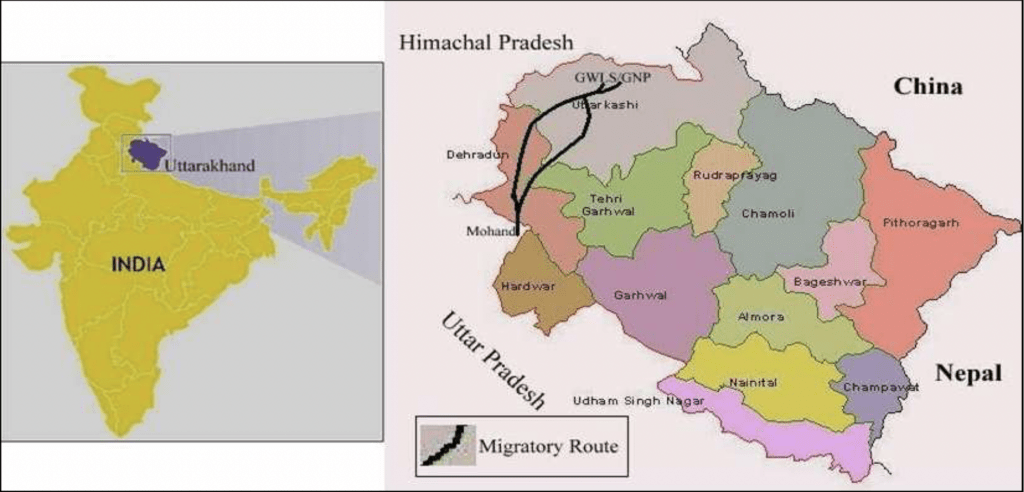
Within Uttarakhand the Van Gujjars traverse the forests across Dehradun, Pauri Garhwal, Tehri Garhwal, Haridwar, Uttarkashi, Nainital, and Udham Singh Nagar districts. However, since the demarcation of these areas under the Rajaji National Park and Corbett Tiger Reserve, the Van Gujjars have been consistently framed as ‘encroachers’ on forest land and have been denied access to graze their livestock. Over the decades, their patterns of migration have changed, while the number of families migrating has drastically reduced with most opting to stay back at their winter homesteads.
It is pertinent to note that until a decade ago, officials from the Rajaji National Park preferred to involve Van Gujjars in prevention activities for forest fires. They were called in to create fire lines, dig water holes, and were provided with fire protection kits amongst them. However, despite efforts by the community in the past—and even in the present—to take preventive measures and remain vigilant against the forest fires, both Courts and the Forest Department continue to frame them as culprits for these fires. Aftab Chohan, a resident of Kunaon in the Gohri range, says “whenever we Van Gujjars spot a fire up in the hills or within the vicinity, we quickly inform forest guards and the designated Ranger. But, we often face harassment from these officials as if the fire was our doing.”
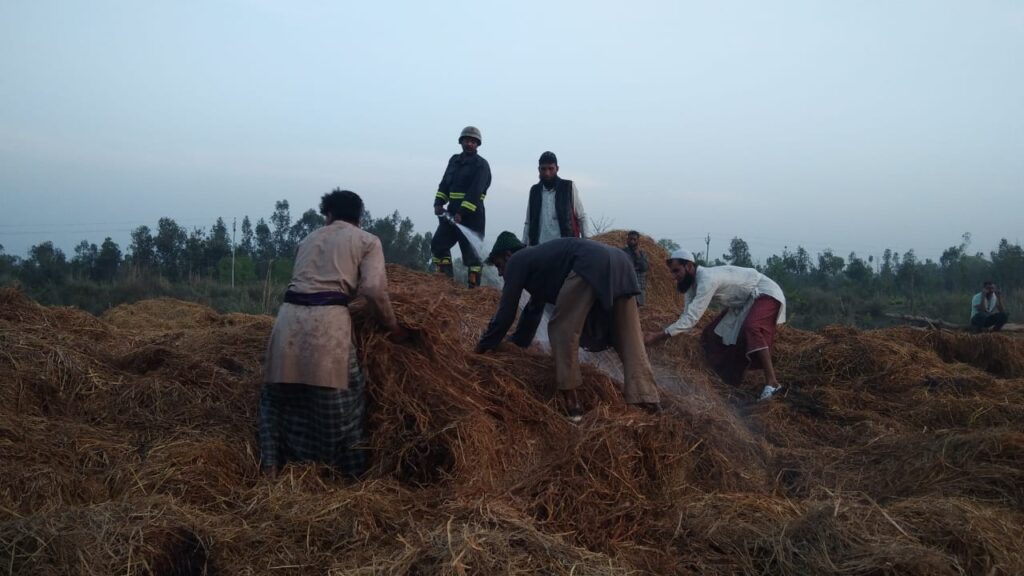
In 2016, the Nainital High Court took cognizance of the forest fires issue. It called for developing firefighting tools and monitoring capacities, appointing firewatchers, stationing National and State Disaster Response Force squads, and digging sufficient water bodies. Early warning systems were to be put in place while stringent penalties were ordered for both forest officers as well as offenders if the fire was severe and prolonged.
However, the negative impact of the Nainital High Court’s order was that it blamed the Van Gujjars for encroaching on forests. It attributed the responsibility of certain fires to the community’s existence within these forests and ordered for their eviction from the Protected Areas.
How Lopping is Used to Marginalise the Van Gujjars
The practice of lopping—which relies on these upper-altitude mixed species—involves threshing out the branches of a fully grown tree, so that the livestock can feed on its leaves. The Van Gujjars believe that trees which are lopped regularly—such as Sein, Bakli, Kharbat, Butel, Sandhan, and Kraal—regenerate at a much faster pace, improving the life of a tree.
When Van Gujjars are on the move in the Siwalik and Terai Bhabar forests, they are surrounded by a mix of deciduous and coniferous forests. Sal is the primary tree species found across two thirds of the landscape here, along with Khair, Sissu, Papri. Mixed species as well as the Chir Pine are present in higher altitudes. However, most of these trees are not lopped by the Van Gujjars now due to fear from the Forest Department. “We could lop Sal and Khair,” recalls Papoo, alias Abdul Gani. “But, since the Forest Department would notice [us lopping] we choose to ignore these trees [now]. But, most of us prefer a diverse tree mix in the forest compartments where we undertake lopping [for our cattle].”
Lopping has been frowned upon by the Forest Department as many of its officials believe that such activities reduce the green cover of a landscape and allow for greater litter on the floor of the forest which later act as catalysts for fires. To prevent the Van Gujjars from lopping specific trees and accessing the parts of the forests where they grow, the Forest Department developed plantations of Teak, Kanju Papdi, Eucalyptus, and Bamboo here, despite the fact that some of these species are not native to the region [5]. As per Van Gujjars from the Gohri range in Uttarakhand, the success rates of most of these plantations were low—most of these trees degraded within a timeframe of three to five years.
Nonetheless, the presence of the Van Gujjars—and their lopping activities—has become more of an excuse for the Forest Department to blame them for forest degradation, and more recently, as seen in the Nainital High Court judgment, for forest fires.
However, restricting their access to the forests to ‘prevent fires’, or developing degraded plantations, may actually be doing more harm than good. By blaming the fires on the Van Gujjars, the State misses a key aspect of the equation here—that the community is as much a victim of the fires as the environment is.
Negotiating the Threat of Fire the Van Gujjar way
“The Van Gujjars have resided in forests for centuries, utilizing forest produce such as leaves, grass, and wood to build huts as well as to sustain our pastoral livelihood,” exclaims Mohamed Meer Hamja, President of the Van Gujjar Tribal Yuva Sanghatan. However, “the sparks from such forest fires can easily destroy our grazing pastures and homes.”
Several forestry scientists claim that climate change influences the early onset of heatwaves, which makes forests inflammable. On studying climate and forest fire data using Remote Sensing and GIS data in Uttarakhand, Ahmed and Goparaju found 79% incidence of fires in April and May, with maximum number taking place in Pauri Garhwal, Tehri Garhwal, Amora, Chamoli, Dehradun, Uttarkashi, Champawat, Haridwar, and Udham Singh Nagar districts. The study highlighted that climate anomalies were considered to be a major contributor behind the increasing frequency and intensity of fires in the Western Himalayan region.
It is no wonder then that the onset of summer makes the Van Gujjars migrating from their winter homesteads nervous. The increased temperatures raise the severe risks of fires impacting their deras—or camps—which are traditionally made of highly combustible materials like wood and grass.
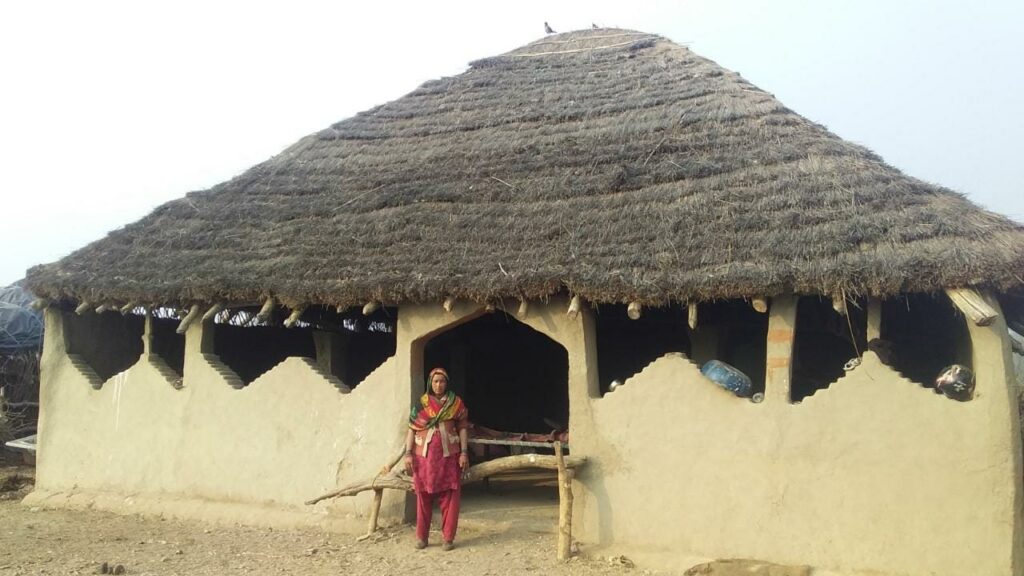
Three such incidents have been recorded this year, at Buggawala and Pathri Gujjarbasti in Haridwar district, as well as at Melisot in the Kotdwar range of Pauri Garhwal district. The fires not only destroyed their property but also led to the death of their livestock. The presence of fodder in the vicinity of the dera becomes a catalyst for these fires. The lack of access to fire brigades deep inside the forests, as well as their inadequate fire safety training, has enhanced the Van Gujjars’ vulnerability towards forest fires in this season.
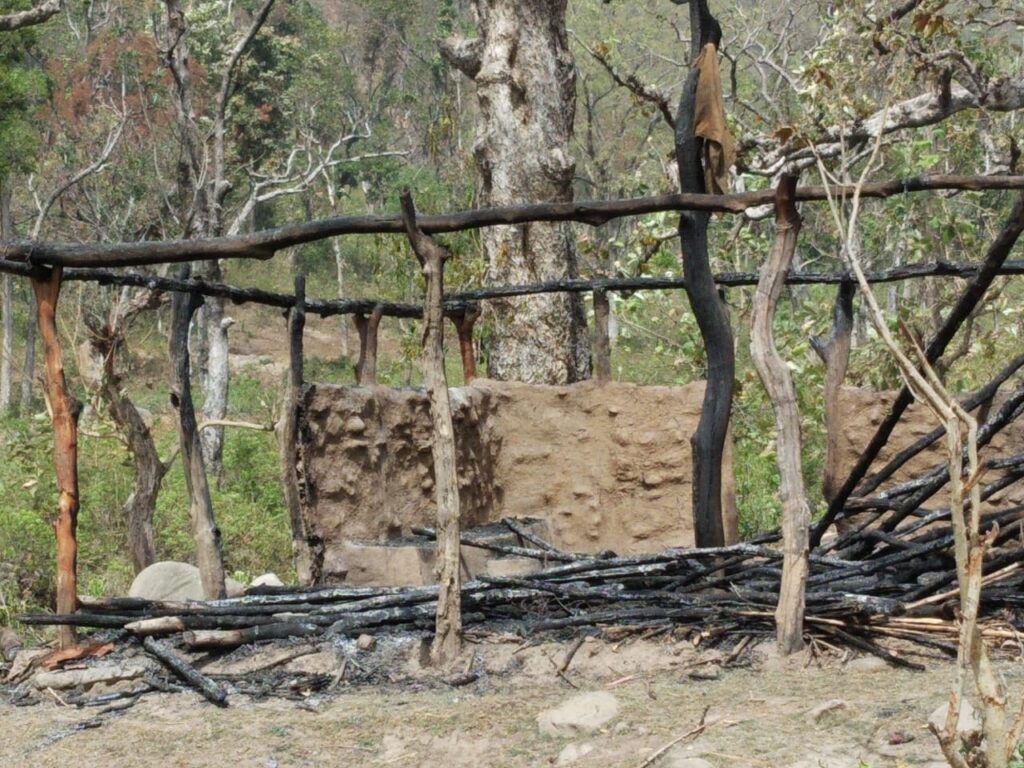
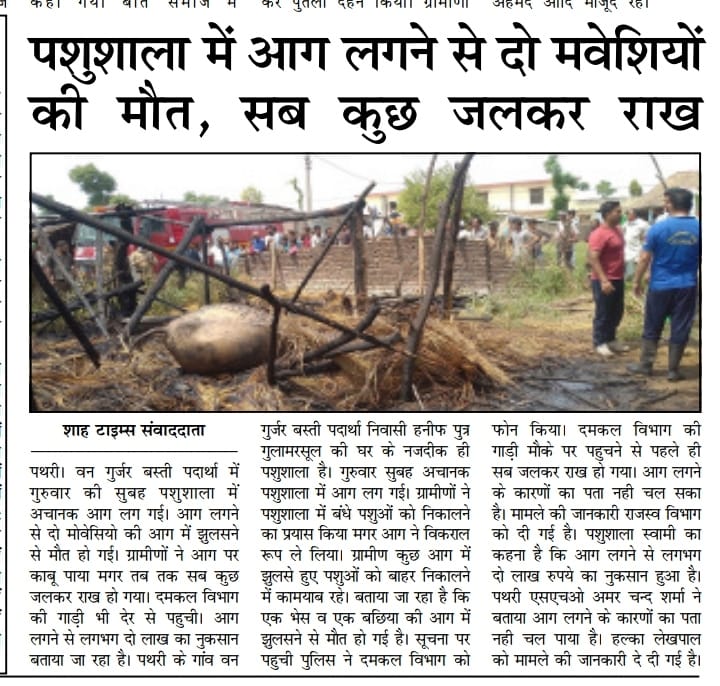
The government’s exclusionary conservation policies—such as developing plantation of alien species—only further marginalise the community’s livelihood of grazing livestock. Hiremath and Sundaram have identified that the present day degradation of forests—often facilitated by the attack of invasive species such as Lantana Camara (commonly referred to as Bilari or Mori)—contributes towards increased intensity of forest fires in that area due to its highly combustible nature in dry heat experienced in summer months [6]. The creation of a fire-lantana cycle has a damaging impact on the compositional and functional growth of forests.
This is of relevance in Uttarakhand because when livestock is barred entry into forests (especially in Protected Areas), there is an unchecked growth of grasses and weeds which aids the brewing of forest fires [7]. The Van Gujjars themselves find Lantana highly problematic in their landscapes as its leaves are poisonous for their livestock. Thus, while engaging in lopping and grazing activities, the Van Gujjars often undertake exercises to get rid of the Lantana.
Yet, despite their efforts, lack of coordination with the Forest Department prevents a long term strategy of keeping this invasive species at bay. In fact, these community-led efforts continue voluntarily despite the Forest department having the responsibility as well as possessing funds to collaborate with locals for effectively removing the Lantana from such landscapes. A lack of accountability from the State has enabled the rapid proliferation of the invasive species in the region—whose negative side effects disproportionately affect Van Gujjar’s sustenance.
Mis-fired Targets of Forest Bureaucracy
Recently, with the surge in forest fires in the Pauri Garhwal and Tehri Garhwal regions, a ranger from the Shivpuri Range issued a summary eviction notice on 5th April 2021 to the Van Gujjars residing and grazing in the area to vacate within a week as their activities were ‘contributing’ to forest fires. The notice threatened the community by stating that any loss of forests caused due to fires (or any other incident) would be blamed upon them if they did not comply with the directives.
“On most occasions we Van Gujjars come forward to inform the forest department about the fires and take sincere efforts on our own as well to extinguish them,” says Mohamad Rafee, a Van Gujjar residing in Kusrela Beat, in the Shivpuri Range, in response to the notice. Hamja agrees. Because there is a “fear of the deras being burnt as well as the impact of the fires on grasslands [which will deprive the livestock of fodder], the Van Gujjars have been ever vigilant to inform the Forest Department of forest fires or take preventive measures on their own to reduce their impact.”
Subsequently, the Van Gujjar Tribal Yuva Sanghatan filed a response to the notice on 9th April 2021, calling it violative of both Section 61-A of the Indian Forest Act, 1927 and the Forest Rights Act, 2006 (FRA). This is happening in parallel with developments that took place in March of this year, when the Nainital High Court in Think Act Rise Foundation v State of Uttarakhand, ordered the Uttarakhand state government to set up a committee to look into the concerns of the Van Gujjars and facilitate the recognition of their rights as stipulated in the FRA.
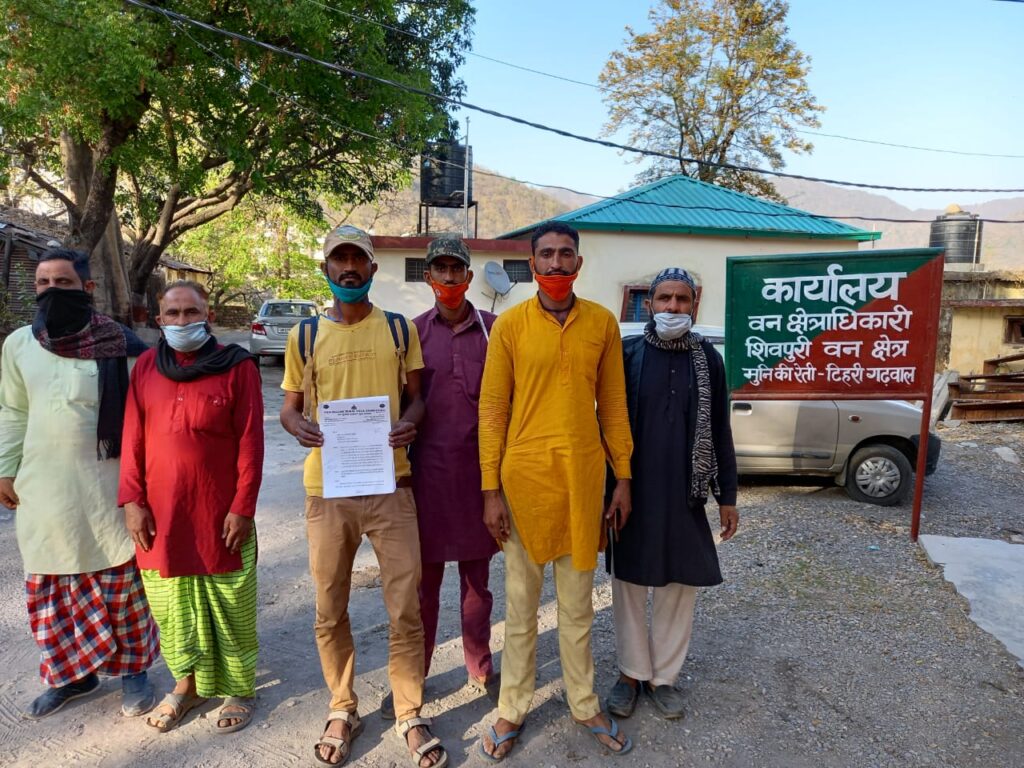
Despite the representation made by the Van Gujjars, the Forest Department on 16th April, 2021, arrived at a settlement to break down the chappar (roof) of a dera in Kusrela beat, Shivpuri range. Given that this is in contempt of the High Court order, the Sanghatan has advised the local Forest Rights Committee to pass a resolution condemning the threats of eviction made by the Forest Department on the pretext of forest fires.
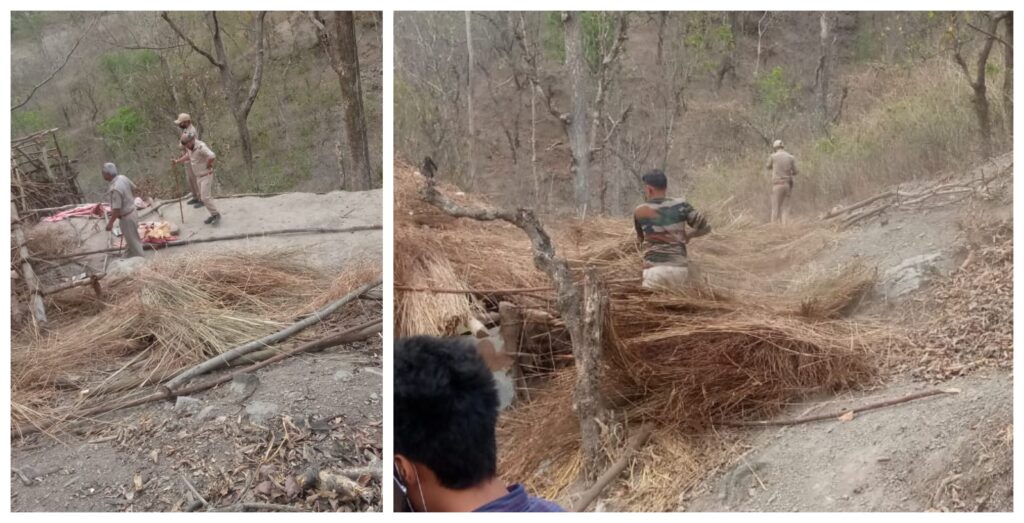
The traditional knowledge of Van Gujjars regarding grazing and lopping can foster myriad ecological benefits in protecting these forests from frequent fires. For example, if also given the opportunity to file Community Forest Resource (CFR) rights over their pastoral grasslands and forests, the community could set up fire safety teams to protect their common resources from such adversities. The FRA has the potential to become a valuable tool for pastoral forest dwellers to develop effective climate change mitigation and adaptation strategies. There is also a growing need to integrate the State Action Plan for Climate Change—that taps into community involvement for climate mitigation—into the Forest Department’s strategies to prevent and combat forest fires.
It is hoped that the State and its myriad arms adopt a more collaborative approach with respect to forestry policies and grants stewardship to forest dwellers for certain matters —rather than criminalising them for living within forests as is being done even today. Only time will tell, however, if we have managed to decolonise our minds regarding forest dwellers such as the Van Gujjars—and view them as possessing rights to reside, occupy, use, and contribute to developing forestry in the region.
Featured image: Van Gujjars and a fire brigade extinguishing a forest fire in Uttarakhand; Courtesy of the Van Gujjar Tribal Yuva Sanghatan.
[1] There are four key elements to developing and realizing a national forest-fire danger-rating system. One of them is a sustained program of scientific research to develop a system based on relationships between fire weather/fuels/topography and fire occurrence/behaviours/impacts.
[2] Sivaramakrishnan, K. (1996). The Politics of Fire and Forest Regeneration in Colonial Bengal. Environment and History, 2 (2), pp. 145-194.
[3] Revenue (Forests) Department, File 30, Serial 9: Letter No. 368/IV-104 dated June 11th, 1884.
[4] Paquet, P.A. (2018). Jungle Government: Forestry, State Making and Development for the Van Gujjar Pastoralists of Uttar Pradesh and Uttarakhand, India. McGill University.
[5] Paquet, P.A. (2018). Jungle Government: Forestry, State Making and Development for the Van Gujjar Pastoralists of Uttar Pradesh and Uttarakhand, India. McGill University.
[6] Hiremath, A.J., Sundaram B. (2005). The Fire-Lantana Cycle Hypothesis in Indian Forests. Conservation and Society, 3(1), pp. 26-42.
[7] Nusrat, R. et. al. (2011). Adaptation and Coexistence of Van Gujjars in the Forests: A Success Story. Accessed at: https://iasc2011.fes.org.in/papers/docs/1400/submission/original/1400.pdf.


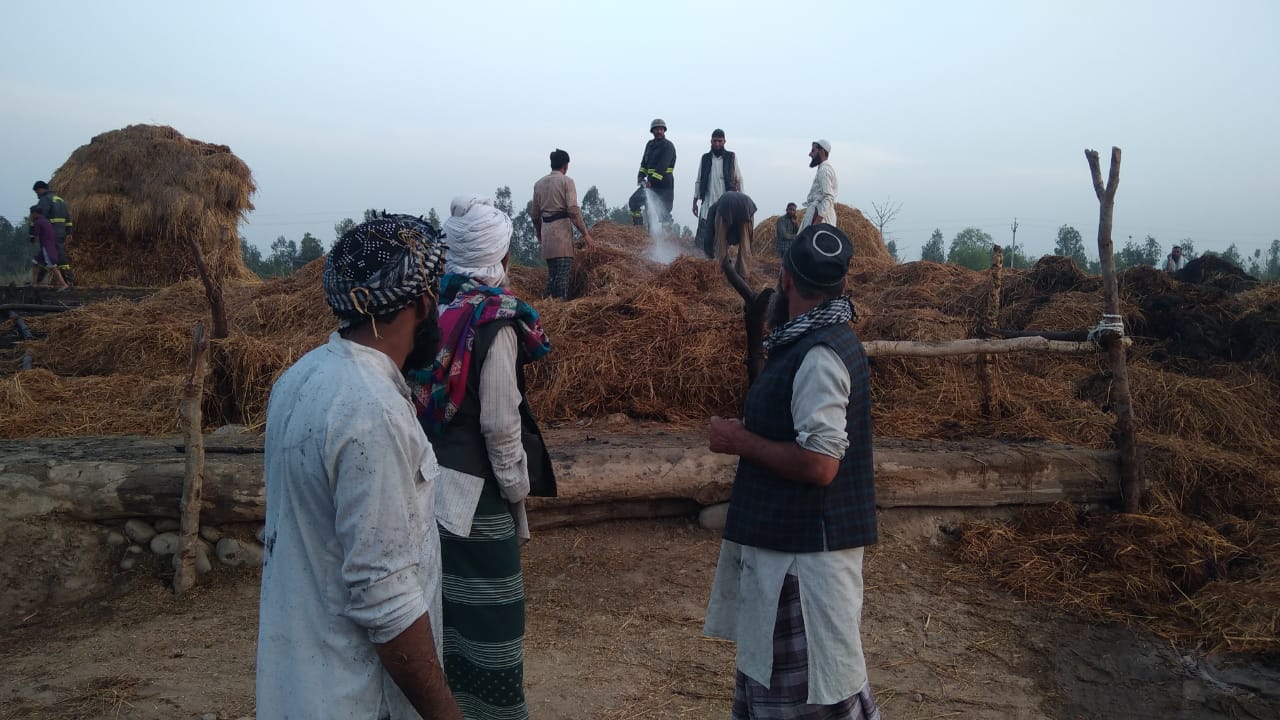




Veri nice work ❤️❤️🙏
Only thing they can contribute towards is more radicals and more mouth to feed .. That is there only contribution..
Only thing they can contribute towards is more radicals and more mouth to feed .. That is there only contribution..
Only thing they can contribute towards is more radicals and more mouth to feed .. That is there only contribution..
The tragedy at Uttarkhand was not natural, it was man made. NTPC is accused of notoriety for disregarding environment and displays utter contempt for concerns raised by environmentalists and scientists. They built the Tapovan Dam despite reservations expressed by the then minister and now they are building a large thermal power plant in the largest mangrove forest on earth and the most sensitive environment concern, the Sundarban. The project was opposed by social activists, environmentalists, scientists and general people in both India and Bangladesh but nothing could stop it going ahead at the cost of damaging the Sundarban.
[…] buffaloes owned by local dairy farmers to follow.” Moreover, as summer approaches, there is reduced risk of forest fires in the hills as most Himalayan nomads excise away dead wood and dried shrubs, as well as lop […]
[…] The Hidden Politics of Forest Fire Management in Uttarakhand: The Van Gujjar Experience […]
The author has rightly pointed out the top down approach still being followed in preventing forest fires and the community namely Van Gujjars are infact ecological sentinals I believe. They should be given their rights under FRA and allowed to lead the community level intervention of forest fires prevention rather than blaming them for it. Looking forward to see such positive changes at the policy level and also academic work from the author.
It would be naive to presume that all forest fires are natural ones. The fact is that most of them are man made because villagers would like to create an area for growing the fodder for their livestock and therefore they resort to fire.
Nowhere does the article presume that all forest fires are natural, it just argues that by terming it as anthropogenic, we shift the blame onto forest dwelling communities who may not be the cause of the fire and equally face the brunt of its wrath.
बहुत अच्छा लिखा एडवोकेट प्रणव मेनन भाई आप ने हकीकत को देखा है और लिखा आप जेसे छात्रों की समाज को बहुत आवश्यकता है
हम आपके आभारी है
3